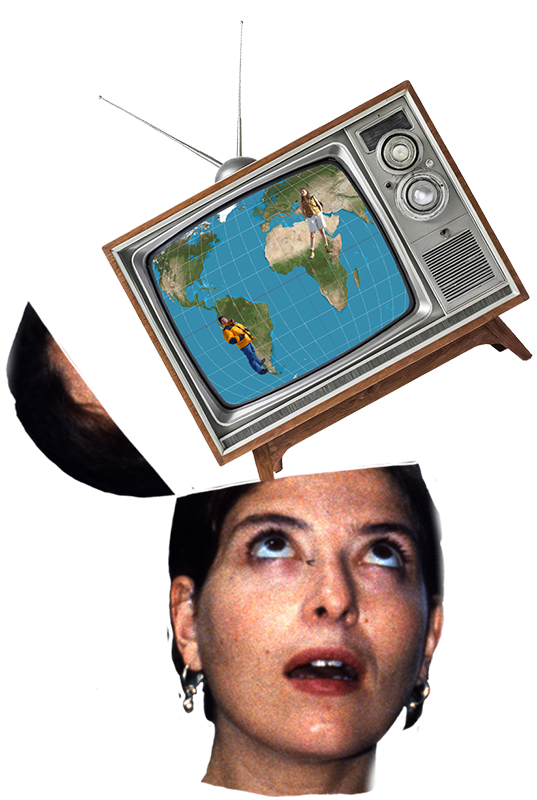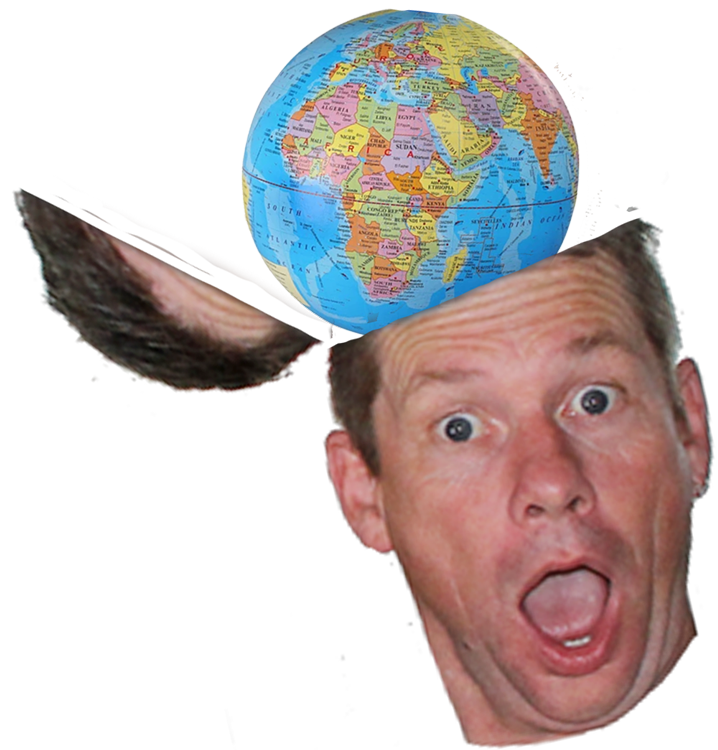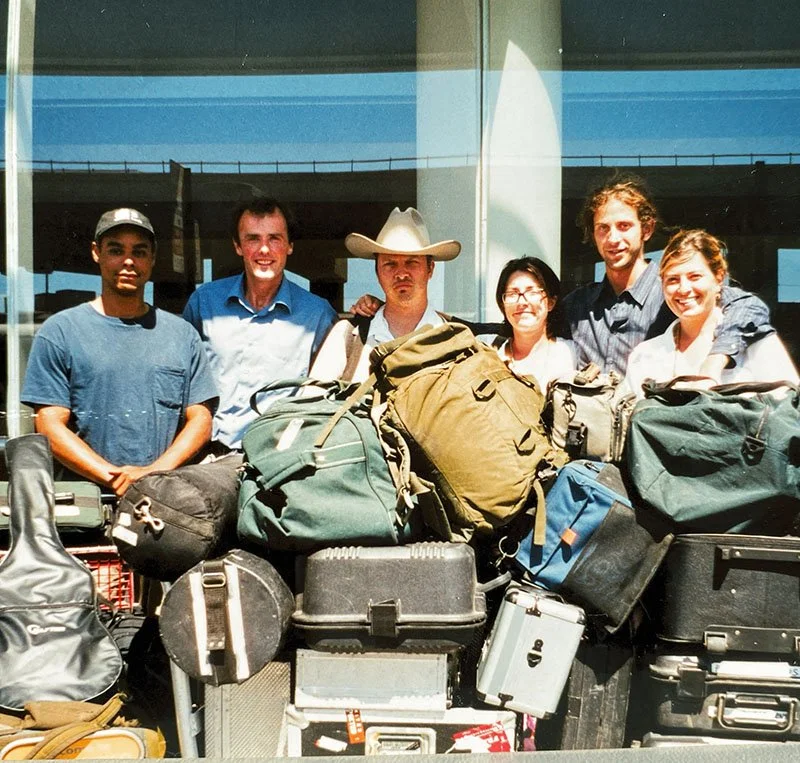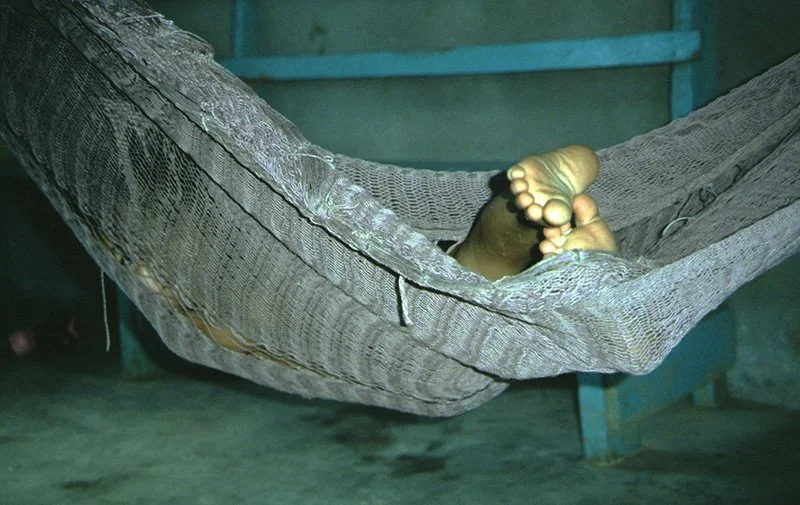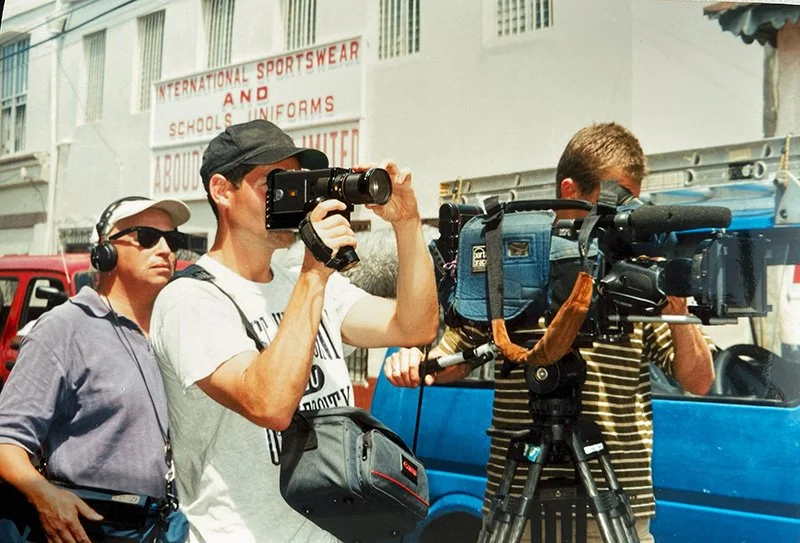
OUR LOONEY STORY
In the beginning…
the Planet was Lonely.
The Globe was void, and without Trekkers.
Then came cable TV—and Lonely Planet (later Globe Trekker) became the first travel show of its kind to be beamed around the world, bringing 300 million people along for the ride with hosts Ian & Justine.
In the 1990’s, inspired by the guidebooks, Ian Cross, of Pilot Films, created the Lonely Planet TV series which later aired as Globe Trekker.
Globe Trekker was a novelty – nothing like it had ever been seen on television before.
The Lonely Planet / Globe Trekker TV series changed the face of travel television, ushering in a new era of immersive, host-driven programming. Each episode invited viewers to travel alongside the authentic backpacking adventures (and misadventures) of Ian & Justine. The world watched as they trekked across the globe with no script—and no cellphone. *gasp*
Many food and travel shows followed in their footsteps, but Globe Trekker was the first where the hosts truly invited you to travel along with them—to experience the ups and downs of life on the road in a world without smartphones to rescue you from every crisis or curious question. A time when you only had yourself—and the kindness of local people—to rely on.
Globe Trekker ran for two decades. Though it quietly vanished in the age of streaming, its influence continues to be felt in every travel TV host and YouTuber who winks to the camera and says “Come with me, it’s going to be a bumpy ride.”
Much like the show, Ian & Justine also seemed to disappear in the digital age. Though they both went on to other things (Ian made more shows and worked on his art, Justine became an Academy Award-nominated filmmaker), neither embraced social media. They fell out of touch with their fans. They watched the world of travel evolve—becoming both more accessible, and more of a burden for the communities impacted by the surge in casual tourism.
They missed the old days of analog travel and of human connection. They missed the show. And they missed all the fans they saw online, still asking: “What happened to Globe Trekker?”
So now they’re back. Not to recreate the past, but to reconnect—with the places that helped shape their lives, and to learn from the people who are shaping what’s going to happen next.
In each podcast episode, Ian & Justine revisit a destination and meet someone who can speak to what life is like there now. They’re talking to artists, activists, chefs, elders, YouTubers, and more—people building lives and creating work that reflects the beauty and complexity of their local cultures.
And they want you to come along for the ride—again. There’ll be stories, laughter, and, plenty of detours. Our Looney Planet, like the TV series Globe Trekker, is all about moving through the world with open eyes, open ears, and an open heart.
So join us!
…Making OUR LOONEY PLANET a little less lonely, one video podcast at a time.
Love,
Ian & Justine
Globe Trekker / Lonely Planet launched in 1994 and ran for over two decades. As the original hosts of the series Ian & Justine travelled to over 100 countries, backpacking off the beaten track with a camera crew of five, a stack of paper maps, traveller’s checks, photos of our families stuffed into our passports so that we could show the locals that we also belonged to loved ones.
Producing a one hour television show over a 4 week shoot during the stone age meant that much energy was expended moving the gear from place to place: an enormous digibeta camera with tapes the size of and weight of bricks, the super 8mm camera and 5 rolls of film; some US dollars and bottles of whiskey with which to bribe anyone with connections to a helicopter (because we were filming way before drones made aerial photography easy as pie) and a sock full of coins in case we lucked out and came across a working pay phone.
And the budget? Let’s just say that when we weren’t sleeping in the van we really were actually sleeping in the shithole we featured on-camera, whether it was a chicken coop, a hammock, or a horse stable. In many countries beer was cheaper than bottled water. Our production took place before mobile technology. No phones. No email. A call to London cost £14 a minute. So the production office had no idea where we were. Which, frankly, was part of the charm. Producers kept their eyes peeled for phone booths and fax machines. We transmitted our authentic backpacking selves – no hair, no make-up, no script - just like an off the beaten trek backpacking adventure, our crew was in a constant state of navigating surprises, and improvising solutions.

